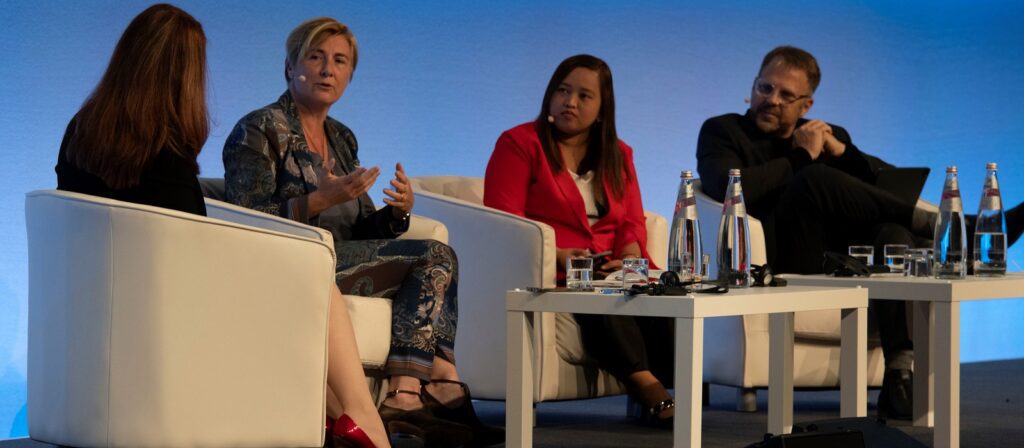Employee wellness has taken centre stage in today’s rapidly evolving work environment, and organisations are actively reshaping their strategies to accommodate the shifting landscape. As recent research shows, a considerable portion of companies—around 40%—have taken proactive steps to update their policies and approaches to wellness, wellbeing, and benefits in response to the post-pandemic reality. This commitment to change is reflected in both substantial policy updates and smaller incremental adjustments.
The four pillars of employee wellness
Employee wellness hinges on four fundamental pillars: physical, social, emotional, and financial wellbeing. These pillars lay the groundwork for holistic wellness strategies that address the diverse needs of employees at various stages of their lives.
1. Physical well-being:
An aging workforce poses unique challenges for employers to consider when addressing physical health concerns. Factors such as remote work and the enduring effects of the pandemic compound these challenges. To counteract these trends, companies are embracing wellness subsidies and fitness activity allowances to promote physical activity. Some larger organisations are even investing in on-site facilities such as fitness areas and meditation spaces to encourage employee well-being.
2. Social well-being:
The rise of remote work has amplified concerns about social isolation among employees. Remote workers may experience feelings of loneliness and detachment. In response, organisations are diversifying their benefits packages to include offerings like fertility treatments, partnership benefits, and support for flexible staffing arrangements. Peer-driven health challenges and team-building activities are also being adopted to foster social connections and create a sense of community among remote workers.
3. Emotional well-being:
The pandemic has underscored the importance of addressing mental health challenges in the workplace. Mental health issues now rank among the top causes of workplace disability. Remote workers report higher stress levels and increased burnout rates, with presenteeism being more prevalent among this group. Employers are leveraging digital health solutions to offer access to mental health resources and online services. Flexible vacation policies, shorter workweeks, and innovative models like the “100:80:100 model” (100% pay for 80% time) are being explored to enhance work-life balance and mitigate burnout.
4. Financial well-being:
Escalating healthcare costs and the overall cost of living are driving the need for financial well-being support. Some companies are responding by providing financial counselling and planning tools to help employees manage their finances more effectively. Retirement benefits are evolving to offer options such as phased retirement and joint savings plans. Employers are also considering support for employees with caregiving responsibilities, offering subsidies for childcare and innovative solutions like emergency savings accounts.
Adapting to generational perspectives
Generational differences significantly influence how employees approach mental health and wellness services. Younger generations, such as Gen Z, are more likely to self-report mental health challenges and utilise related services. With Gen Z projected to constitute around 27% of the global workforce by 2025, addressing mental health concerns remains a top priority. However, the complex and multifaceted reasons behind generational differences in attitudes toward mental health necessitate careful consideration.
Balancing remote work and return-to-office dynamics
The debate surrounding remote work versus in-person office presence has prompted an exploration of their impacts on employee well-being. Research suggests that remote workers face challenges in maintaining physical, mental, and social well-being due to the nature of remote work. To address this, many companies are embracing a hybrid approach, allowing employees to spend a portion of their workweek in the office and the remainder working remotely. This approach aims to reap the benefits of in-person interactions while retaining the flexibility that remote work provides.
Empowering employee wellness: key actions
As organisations navigate these trends, several key actions can guide their efforts:
- Data-driven insights: analyse absence, retention, and vacation patterns to identify trends and areas of concern.
- Continuous engagement: foster regular engagement through surveys, focus groups, and open dialogues to understand employee needs and preferences.
- Tailored well-being programmes: Customise wellness initiatives to cater to employees at different life stages and circumstances.
- Manager empowerment: equip managers to promote wellness and encourage employees to utilise available resources.
- Ongoing review: continuously assess wellness programmes to ensure alignment with organisational values and the removal of biases.
Looking ahead
As organisations navigate the intricate terrain of employee wellness, adaptability and responsiveness remain paramount. By prioritising employee well-being and implementing comprehensive wellness strategies, companies can create a positive work environment that fosters employee satisfaction, retention, and overall success. As the workplace continues to evolve, a dynamic approach to wellness will be key to maintaining a resilient and thriving workforce.





